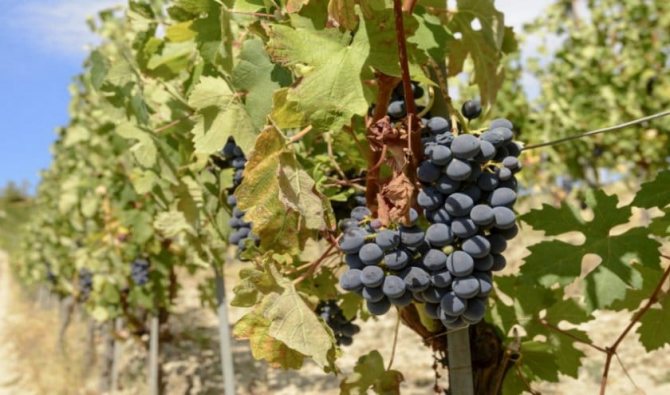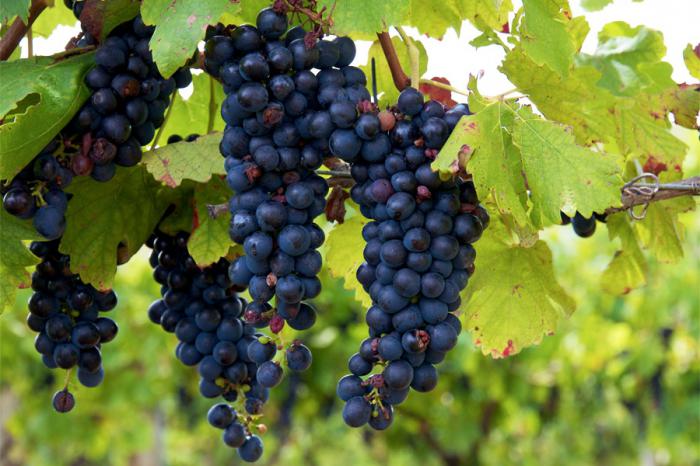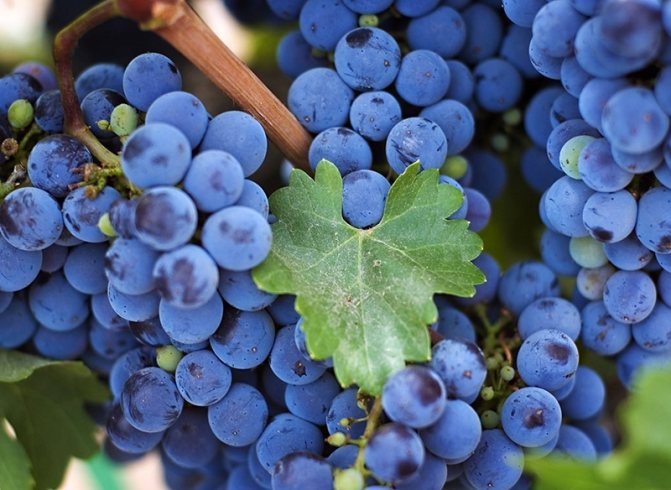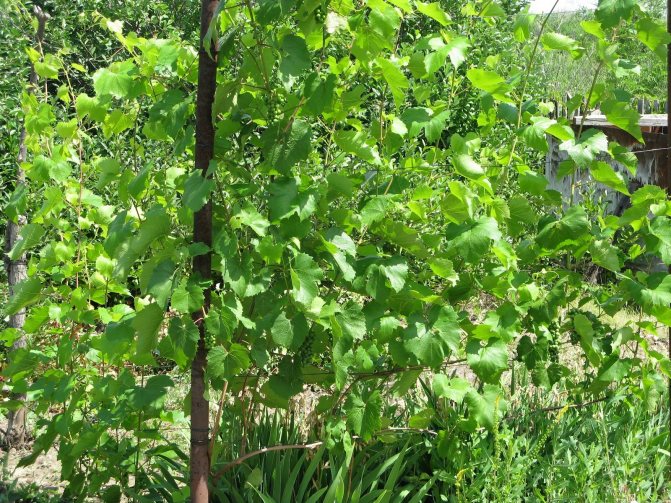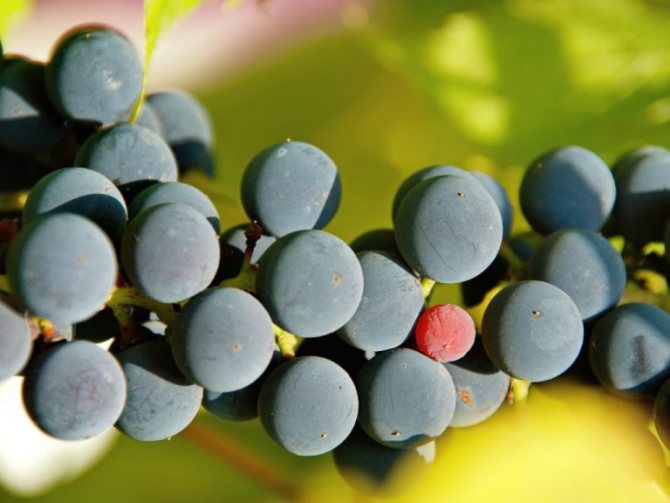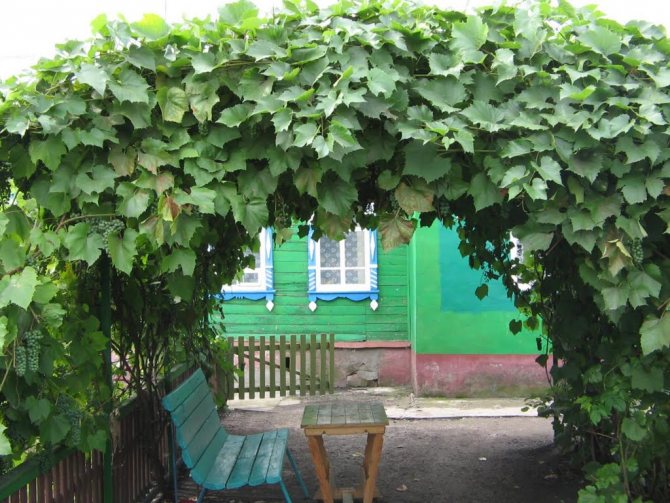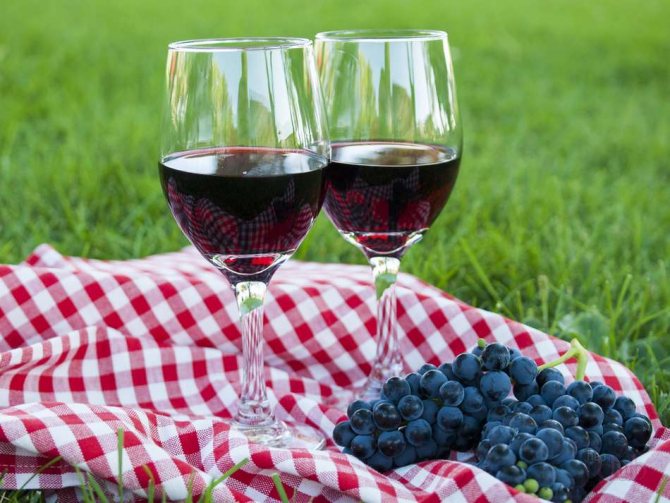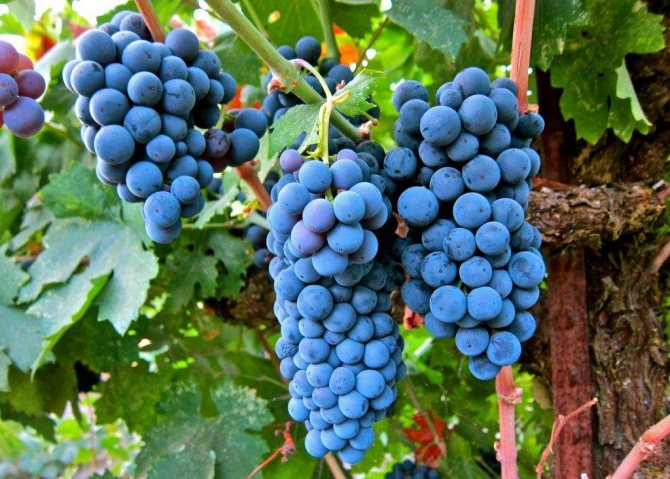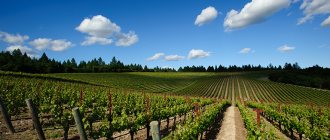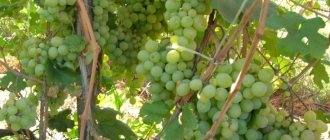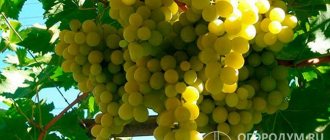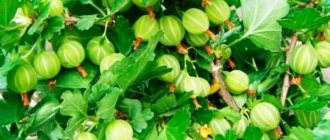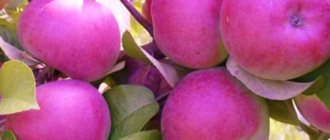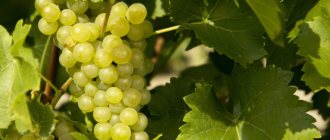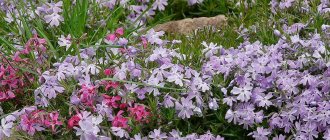Fruits and berries »Grapes
2
898
Article rating
The Isabella grape is a technical hybrid with dark berries. It belongs to the oldest varieties, it was bred 2 centuries ago. Even in the last century, it was grown on an industrial scale. Now grapes have given way to higher quality varieties. The vine is found in private farms, it is planted as an ornamental plant.

Isabella black grape
Isabella variety description
Late ripening variety. Full ripening of berries occurs only 170-180 days after bud break. The bush is vigorous, the vine grows rapidly. The leaves of this grape are quite large, bright green, dense.
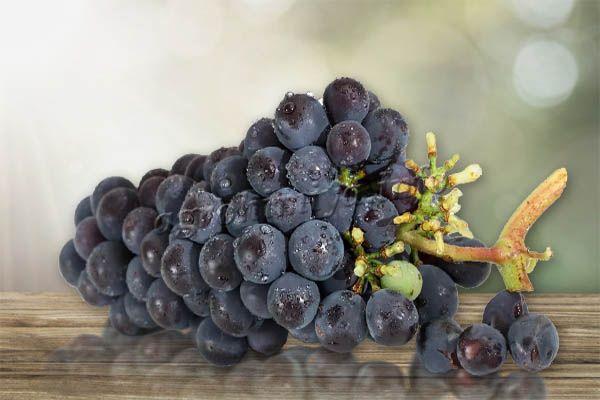

Conical bunches of medium density
Conical bunches of medium density. Each bunch weighs about 130-250 g. But, the more brushes on the bush, the smaller they will be in size. The average weight of the berries is 2-3 g. They are round in shape. The color of the skin is dark blue, the bloom is gray. The pulp is slimy, light green, easily separates from the skin when pressed. The seeds in the berries are large, 1-3 pieces in each. Sour taste, sugar content on average 18%. Lovers note that the taste of this variety has notes of strawberries, currants and grapes. The aroma is nutmeg.
Interesting!
Isabella grapes are often used for gardening gazebos, fences, columns growing near the house.
Diseases and pests
According to the description of the variety and reviews, Isabella grapes are extremely rarely affected by diseases characteristic of this culture. Even to phylloxera, it has a fairly high immunity. The only danger for the vineyard is anthracnose. Therefore, do not forget about regular preventive treatments.


Pests also rarely appear on the vine. Insects are frightened off by the nutmeg aroma contained in the skin of the berries. Even wasps and bees, lovers of sweets, fly around the bushes of Isabella.
Important! Ripe berries contain a huge amount of potassium, so eating Isabella in food will have a beneficial effect on the condition and functioning of the cardiovascular system.
However, birds are very fond of eating this grape variety. Therefore, take care of the protection of the crop in advance. Thin mesh bags worn on ripening brushes help well.


An experienced winegrower presented in a video clip a visual description of Isabella grapes, its main characteristics and scope
Characteristics of Isabella grapes
Check out these articles as well
- When to plant tomatoes for seedlings in 2020
- Yeast feeding
- Onion peel
- Agrolip adhesive
The Isabella grape is known all over the world, but what are its features? Why is this grape often chosen for growing in the backyard? Its characteristics are the reason.
- This variety can grow on many types of soil, even on barren soil.
- The yield is high, it can reach 50 kg per year.
- The taste of this grape is nutmeg.
- Resistance to frost is high, up to -30 degrees. For the winter, these grapes are not harvested when grown in the Central regions.
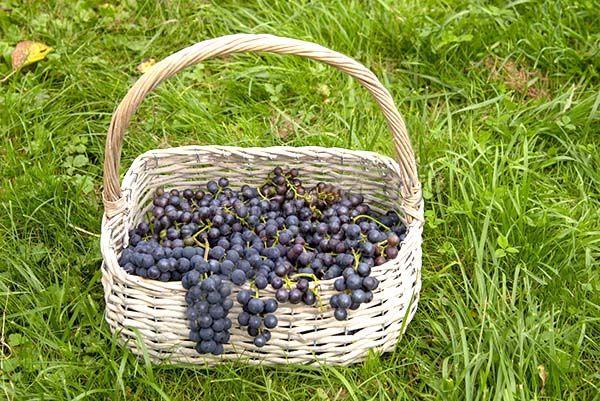

High transportability due to dense skin
- Drought tolerance is low.If the drought is short-lived, the grapes will endure it, but if it is prolonged, it may die.
- There is a stable immunity to diseases (phylloxera, mildew, oidium). But this variety can get sick with anthracnose, so preventive treatments are still necessary.
- High transportability due to the dense skin.
- You can store these grapes for several months in a cool place.
Important!
Isabella wine has a high methanol content, so in some European countries it is prohibited to sell it.
Advantages and disadvantages
For almost two hundred years of growing Isabella grapes, gardeners have discovered a lot of advantages in it:
- unpretentiousness in planting, care, cultivation;
- high productivity;
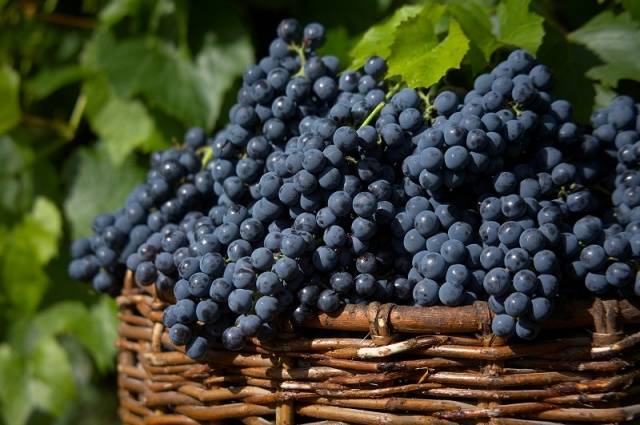

- good keeping quality and transportability of ripe grapes while maintaining the presentation and taste;
- distinctive taste characteristics inherent only in this variety;
- has high resistance to low temperatures;
- has immunity to many diseases characteristic of this culture;
- ease of reproduction;
- wide range of applications;
- relatively low calorie content in berries;
- decorative value of grapes.
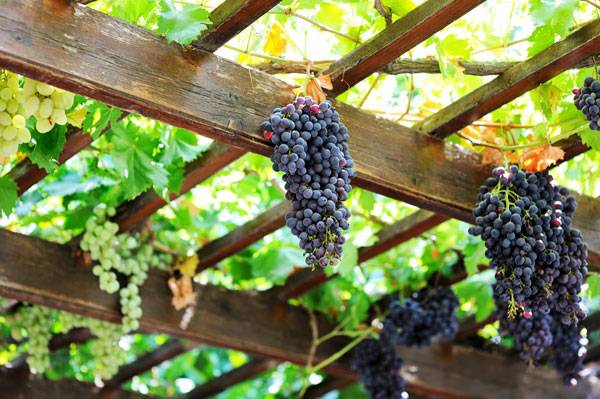

But, in addition to the advantages, the Isabella grape has some disadvantages:
- this variety is picky about waterlogging or even a short drought. With excessive watering, the development of putrefactive diseases is likely. But the lack of moisture will affect the yield: an outwardly healthy vine can shed foliage and even brushes. The remaining berries become smaller, and when ripe they acquire a sour, tart aftertaste.
- grapes do not like too acidic and alkaline soils. Therefore, it is desirable to maintain the acid-base balance within the normal range.
- despite high immunity to many diseases, Isabella is prone to anthracnose lesions. To avoid damage to the vine, it is necessary to carry out preventive treatments twice a year, in spring and autumn;
- wine made from Isabella or her hybrids, after three years, acquires an unpleasant, putrid smell.
The peculiar taste and aroma of Isabella grapes, reminiscent of garden strawberries, are considered by winegrowers to be a serious drawback. But some lovers of this noble drink like this variety precisely because of the presence of this distinctive quality.
Important! Ripe Isabella grapes contain a large amount of nutrients and are very beneficial for the body.
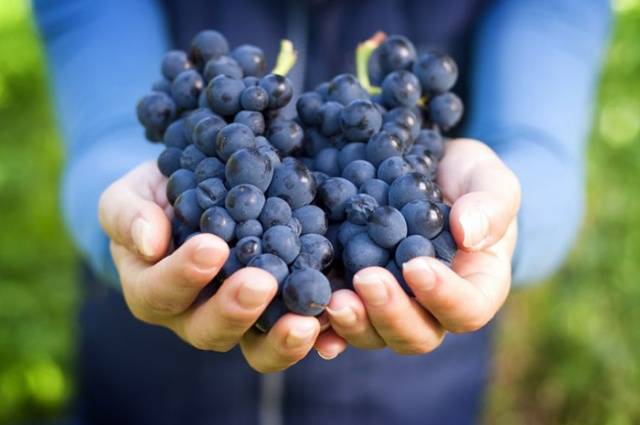

Planting grapes
In order for the cultivation of Isabella grapes to give a positive result, it is necessary to plant it correctly. For this variety, a sunny, ventilated area is selected. The soil should be of medium acidity. It is best to plant in the fall, so that next year the bush can give its first harvest. You can also plant these grapes in the spring, but then the harvest will have to wait longer.
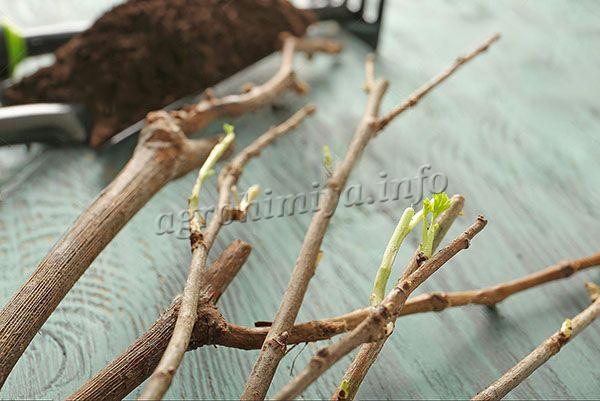

Seedlings for planting should be chosen for annuals, they take root faster
Seedlings for planting should be chosen for annuals, they take root faster. A sprout for planting is chosen with a height of about 20 cm or more. It should have developed 3-4 roots, 10-15 cm long. The plant should be healthy.
If several seedlings are planted, then a distance of 1.5 meters is made between them. A planting pit is dug with a diameter and depth of 80 cm on average. It is advisable to do it in advance. Drainage is placed on the bottom with a layer of 5-7 cm from crushed stone, broken brick or pebbles. Pour earth mixed with humus and wood ash on top. A slide is made from the planting soil, on which the seedling is placed. The roots are spread on all sides and then covered with earth. After planting, the earth is compacted and watered.
Important!
If the seedlings are 20-30 cm high, then they are planted vertically, in other cases, planting is carried out at an angle of 45 degrees.
Breeding varieties, how and when you can do
It is recommended to propagate the culture by cuttings. For harvesting planting material, it is worth cutting off part of the productive annual shoot. Its diameter should be 7-10 mm, and its length should be 1.5-2 m.
Then the vine can be cut into pieces measuring 20-40 cm. The top cut should be 2-3 cm above the eye. Then the cuttings should be soaked in a solution of ferrous sulfate for a couple of hours and stored in a cool place.
In early February, the planting material should be pulled out and placed in moistened coniferous sawdust. When roots appear, the bushes can be planted in a substrate of sand, soil and compost.
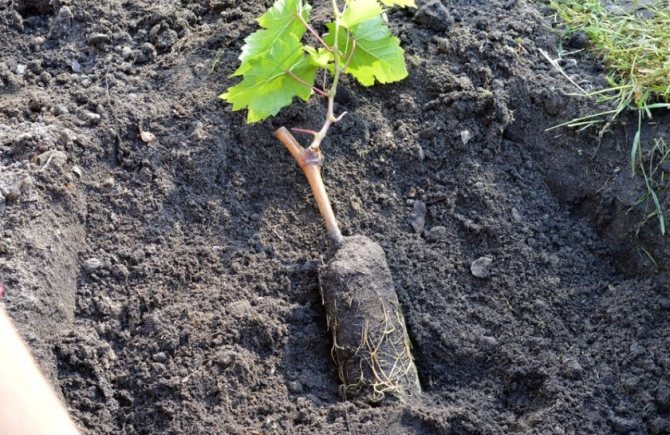

It is recommended to propagate grapes by cuttings.
Isabella grape care
We recommend reading our other articles
- How to store garlic
- Lunar calendar for 2020
- Growing cabbage
- Raspberry variety Caramel
The cultivation of Isabella grapes is carried out according to a certain scheme. If you do not regularly care for the bushes, they will not give a full harvest.
- Watering is needed regularly. It is especially important to water the bushes before flowering and during the growth of the berries. But, if there is a lot of natural precipitation, you can do without watering.
- To obtain a large harvest in a short time, and so that the grapes have time to ripen on time, it is necessary to cut off all excess leaves, which darken the bunches. Then a lot of sunlight will fall on them.
- Weeds under the bush must be cleaned regularly. It is also important to loosen the soil under the grapes to keep the soil soft.
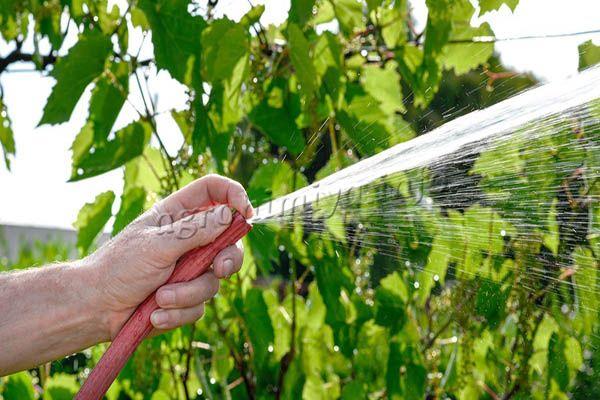

Watering for Isabella needs regular
- Fertilizers are applied up to 3 times a year. Minerals are more often used, but about once every 2-3 years it is worth adding humus or compost under the bushes.
- Pruning is carried out at least once a year. It is made necessarily in the fall, but if necessary, also in the spring. Within 4-6 years, the bushes form.
For the winter, Isabella grapes do not need to be insulated. This variety can withstand even very severe frosts. If there are concerns, you can simply mulch the bushes, this is more than enough. Mulch is laid directly under the bush, in a layer of up to 25 cm. In the spring it can be removed when the snow melts and begins to warm.
Historical reference
More than two centuries ago, the American gardener Gibbs crossed the cultivated grape Vitis Labrusca and the wild Vitis Vinifera. The variety owes its name to the owner of the land, Isabella Gibbs.
Further discoveries are associated with the name of the breeder V. Prince, who experimentally discovered the Isabella pink grape, known as Lydia.
By the end of the 19th century, the variety was widely developed and became so popular that having the Isabella bush was considered a sign of good taste and a tribute to tradition. Each winegrower strove to cultivate it in his own area and to make wine that many loved.
The reputation of grapes was spoiled by the discovery in wine of an increased concentration of methyl alcohol in comparison with wine from pure varieties. This led to the introduction of a ban on the import of wine from grapes: "Isabella", "Lydia", and to the extensive destruction of vineyards in America and France. However, many growers still grow the variety on their plots and enjoy its beneficial properties.
Harvesting and processing of crops
The harvest ripens by the second half of October or later. It is usually harvested before the end of November, as it ripens. The keeping quality of these grapes is influenced by many factors, including the climate. The more it rains during the ripening of the crop, the less the berries will be stored. To keep the clusters longer, it is necessary to collect them no earlier than 3-4 days after rain, in dry weather.


Isabella grape has versatile uses
The Isabella grape has versatile uses. It is often eaten fresh, used for canning, making juice. This grape also takes an honorable place in home winemaking. But for drying, this is not the best variety.
Distinctive characteristics of the variety
At the moment, the Isabella grape is the most popular and widespread variety in the world. Its direct purpose is canteen, which means that it is versatile. The area of application of the fruit is wide enough. Ripe fruits are used for the production of wine both at home and on an industrial scale, for fresh consumption, as well as as raw materials for various preparations.
According to the description, Isabella grapes are late-ripening varieties. On average, its growing season is approximately 5-6 months. That is, the harvest takes place at the end of September - beginning of October.
Attention! Gardeners are very fond of Isabella grapes because they are not touched by wasps and bees during ripening.


A young vine grows for a long time. However, a fruit crop, which is more than 5-7 years old, annually grows in length by 3-4 meters or more. The shrub does not form so many stepsons, which is an advantage of the variety and facilitates the work of winegrowers. Isabella's shoots are greenish in color with a delicate raspberry tint and a dense edge. Subsequently, the color of the shoots changes to gray with a brown tint.
The leaves of this variety are medium in size, can be either whole or slightly cut into three parts. The upper side of the leaf plate is dark green, the lower one is light gray.
The photo shows that the description of Isabella grapes is as follows: the clusters are of medium size, the average weight reaches 190-250 g. Most of the clusters do not differ in density.
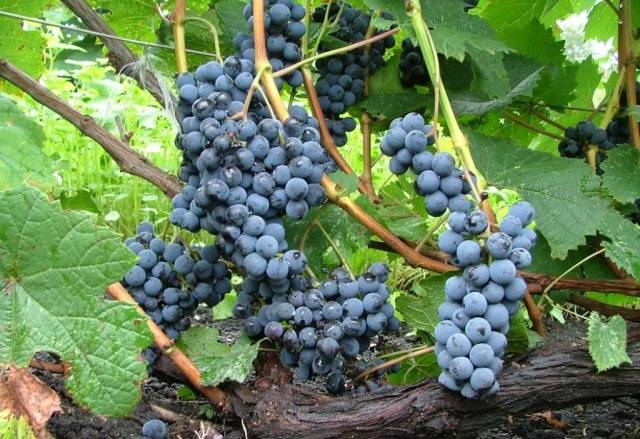

High yield is achieved due to the increased number of brushes on each shoot in comparison with other varieties. That is, from 2 to 5 fruit brushes can immediately form on one fruiting shoot.
The shape of the grape clusters is cylindrical or conical, with one wing. The average yield of one adult vine is 50-60 kg.
According to the description of the variety and reviews of gardeners, the berries of Isabella grapes (pictured below) are round, 1.6-2 cm in diameter, black-purple in color, covered with a thick, bluish bloom, which is a distinctive feature of this variety. The skin of the grapes is quite dense and firm, which is of great importance for transportation.


Important! With proper care and under excellent climatic conditions, it is possible to grow bunches of grapes weighing up to 1.5-2 kg.
Experts estimated Isabella's sugar content at 16-18%, the average weight of one grape varies within 2.5-3 grams. The pulp of grapes has a sour-sweet taste, slimy consistency, light green or yellow-green in color. The flavor of the berries distinguishes Isabella from other varieties - the delicate taste and smell of garden strawberries. The fruit has few seeds.
It is because of the peculiar taste that European winemakers consider the wine made from Isabella to be of poor quality. However, in other countries, in particular, in Russia, Australia, North and South America, there are many amateurs who greatly value wine based on this grape.
The peak of ripening of the crop falls on the month of October. It is very easy to find out that the grapes have reached maturity, and the time has come to harvest the fruits - the berries spread a rich aroma of nutmeg throughout the garden.
The first bunches of grapes appear on the vine 3-4 years after planting young seedlings in the ground.
This variety has a fairly high frost resistance. Without much damage, the bushes tolerate low temperatures down to –32˚C –35˚C with shelter. In the absence of shelter, the grapes perfectly tolerate frosts down to –25˚C –28˚C. This circumstance is the main advantage that allows you to grow this variety not only in the southern regions of Russia, but also in areas with a more severe climate.
Advice! Isabella wines have a wonderful, delicate taste. But it is not recommended to store them for more than three years.
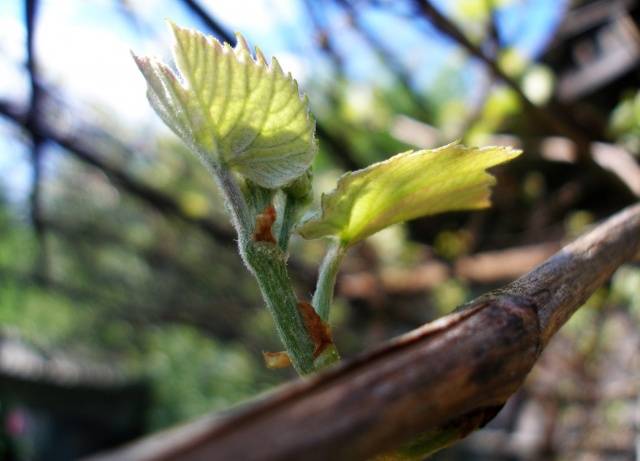

Isabella grapes are also distinguished by the fact that if the bush accidentally falls under return frost, young shoots very quickly appear in the place of the frozen shoots, which has time to form in the current season.
The vine is very rarely affected by fungal diseases. Mildew, powdery mildew, powdery mildew, gray rot will not cause serious damage to shrubs. Phyloxera is also extremely rare on fruit crops, even if neighboring plants are infected with this disease.
According to the characteristics and description of the variety, Isabella grapes are easily propagated by cuttings. The planting material quickly takes root and does not get sick during transplantation. Many breeders to this day are working to improve other varieties by crossing them with Isabella. The new hybrids combine excellent qualities and are highly resistant to diseases.


The Isabella Belaya grape variety also has a high yield and identical qualities, the photo of which is presented above, the description of the variety is not much different from the usual Isabella. However, unlike its closest relative, this variety belongs to crops with an early ripening period.
Another variety derived from Isabella is the Isabella large-fruited grape. It belongs to medium early varieties in terms of ripening. Berry picking begins a month and a half earlier. The main characteristics are identical and not much different.
Important! Despite the rich, dark color of the skin of the berries, when eating grapes, allergic reactions appear in very rare cases.


Many gardeners appreciate Isabella grapes not only for their taste characteristics. Fruit and berry crops can also be used as a decorative component in landscaping household plots. The vine looks great as it wraps around a garden gazebo, fence, or veranda. With the onset of autumn, the foliage acquires a bright, yellow-golden color, which gives the garden a special, spectacular look.
According to the description of the variety, Isabella grapes are undemanding to the composition of the soil, the introduction of additional fertilizing, not picky in cultivation and care. The requirements of agricultural technology are so simple that even a novice winegrower can cope with them.
How to make wine from Isabella
The recipe for Isabella wine is the same as for any other wine. Making such a wine is not difficult at home either. The first step is to clean the container where the wine will be prepared, then wash the bunches and pick the most ripe and juicy berries. They are put into a fermentation vessel, crushed to make juice, and then left to ferment.
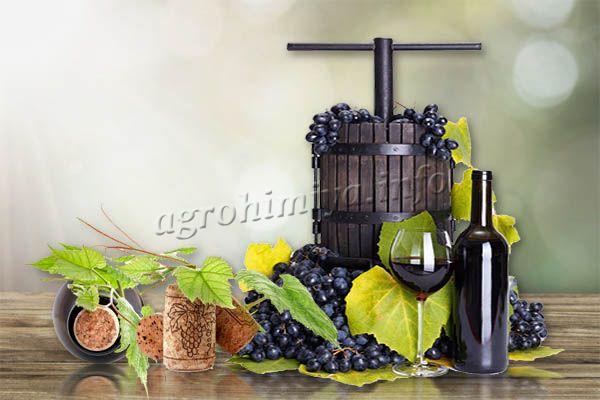

Isabella's wine recipe is the same as any other wine
The juice should begin to ferment itself, on its own yeast. It is not recommended to add anything to the berries so as not to spoil the wine. Of course, if you add something, fermentation will start faster, but you need to take into account that a good wine takes a lot of time. When the wine is fermented, it needs to be filtered and bottled. If you bottle it ahead of time, you can also get a good drink, but it will not be a simple wine, but sparkling wine.
Important!
If you make wine from rotten, spoiled berries, the final taste of the product can be very disappointing.
Benefits for the cardiovascular system
Potassium, which is part of the berries, improves heart function. Also, the use of this product normalizes blood pressure, thins the blood, and prevents the formation of cholesterol plaques in blood vessels. Grapes have a positive effect on the work of the heart muscles by stimulating them. Powerful antioxidant effect
Antioxidants cleanse the blood of toxins and increase its effectiveness. Their effect on the human body slows down aging and is beneficial for the elderly.
Also, these substances prevent the formation of cancer cells, so doctors recommend including them in the diet of cancer patients in order to use them to prevent such diseases.
Reviews of gardeners about Isabella grapes
Gardeners' opinions on Isabella grapes are presented below.
- Maxim Krivoguz: “Isabella grapes have been grown on our site for many years. Berries for food are not suitable for us, so we process them into juice and wine. The juice is very concentrated, but with a delicious taste. As for wine, it is best obtained only if the technology is followed. When sugar is added, the taste deteriorates greatly. "
- Elena Zhurba: “Growing Isabella grapes is a real pleasure. He almost never gets sick, he grows quickly. The only problem I ran into was cropping. It takes a long time because the vine grows very quickly. Sometimes you also have to shorten the vine in the summer. But there is a lot of harvest, so sometimes there is enough for sale. "
- Valentina Skripnik: “The berries of Isabella grapes are more suitable for processing. They can be eaten fresh, but they are sour, but ideal for making juice. Bushes yield a lot, usually enough for canning. I don't sell berries, the demand for them is low, but the juice is sold out quickly. I also tried to freeze the berries, but after defrosting the taste is not the same, although for winter compotes this is a good option. "
History of appearance
The Isabella grape is a variety that appeared as a result of the selection work of Mother Nature herself. According to botanists, this variety appeared as a result of cross-pollination of the European variety Vitis Vinifera, brought to the American continent, and the local variety Vitis Lambrusca.
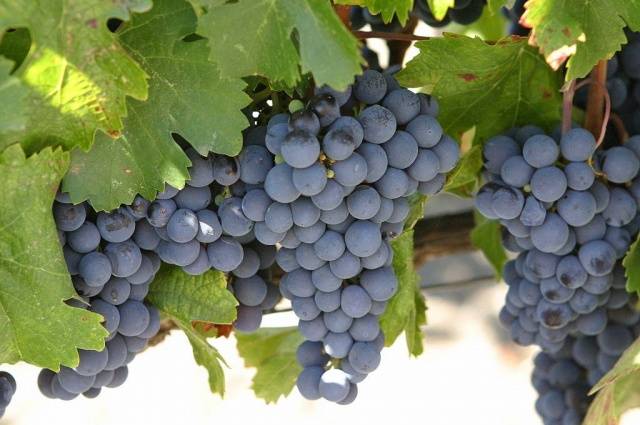

The Isabella grape variety is known by its official name as Isabella Banskaya and has been cultivated by amateurs and professionals for almost 200 years. The American breeder William Prince, who met this plant in the gardens of Long Island, was the first to describe the Isabella grape variety. He is also the originator of the Isabella Rosovaya grape variety, which was bred on the basis of Isabella and is known in Russia as the Lydia variety.
Isabella grapes appeared on the territory of Russia in the 50s of the last century. This variety was highly appreciated by winemakers for its high yield, unpretentiousness and resistance to many diseases characteristic of this fruit crop.
Comment! Wine from Isabella Belaya grapes is not produced due to the low quality of the resulting drink, however, rakia or grape juice from it are amazing.


Currently, Isabella is grown practically throughout Russia. The variety is very common in Moldova, Georgia, Armenia and Azerbaijan, where it is grown in private and industrial vineyards as a raw material for wine production.
The ideal climate for growing Isabella grapes is temperate, subtropical. This variety perfectly tolerates winter frosts, which are detrimental to other varieties.
In the 70s of the last century, the EU banned the production of wines on an industrial scale based on Isabella and its hybrids. The official reason for the ban is the high methanol content in beverages as a result of fermentation. After a while, this "charge" was dropped from Isabella grapes, but in Europe this variety has not been rehabilitated.

